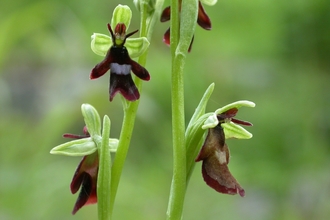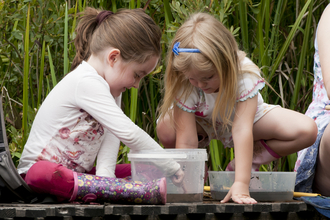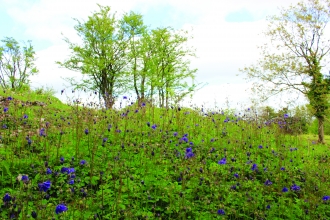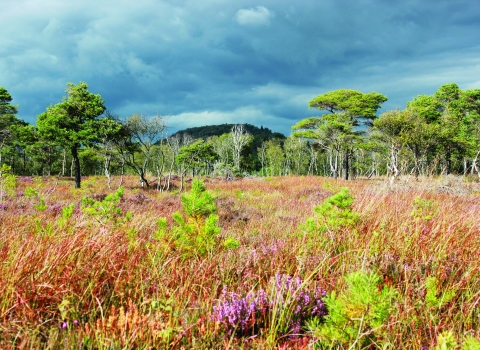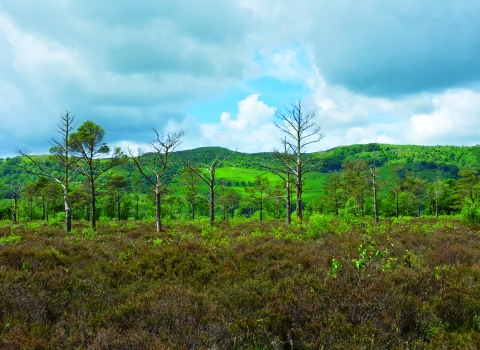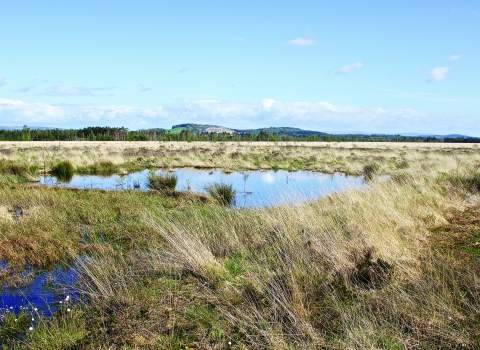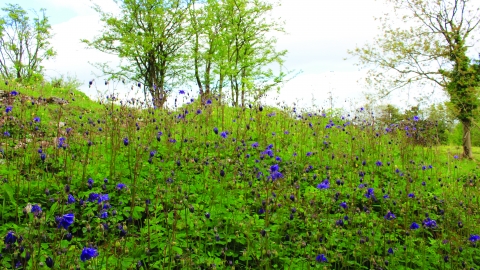
© Michelle Waller
Latterbarrow
Location
Know before you go
Dogs
When to visit
Opening times
Open all year roundBest time to visit
April to JulyAbout the reserve
Wildlife highlights
- Wild columbine and oxeye daisy, followed by common rock-rose, agrimony and betony are just some of the vibrant blooms on show during June and July
- Brimstone butterflies emerge on warm days from February onwards, but this is just the start, as northern brown argus, speckled wood and meadow brown are also plentiful in the summer.
- Notice the small thyme-covered mounds of yellow meadow ant nests in the grassland
- In spring - see fantastic display of cowslips and early purple orchid.
- In summer - orchids are in flower and butterflies are on the wing.
- In autumn - golden rod and devil's-bit scabious are flowering and you can still see butterflies.
- In winter - redwing feed on berries while flocks of tits, nuthatches and treecreepers are around. Small reserve- amazing variety
Small oasis
Despite its size, Latterbarrow is home to an amazing variety of plants with over 200 species recorded. The underlying limestone rock, combined with a mix of grassland, ash and hazel woodland and scrub provides a variety of habitats.
What makes Latterbarrow so special?
Yew and the rare Lancastrian whitebeam are particular features of the woodland, but the flower-rich grassland steals the show. Ash and hazel woodland covers about half of the nature reserve.
With early-purple orchid and cowslips opening the sequence in May, greater butterfly and fragrant orchids follow in June, and the display becomes even more colourful in July.
By varying the timing of the grazing, flowers set seed periodically, which ensures the continuing diversity in the grassland. The resulting abundance of nectar makes Latterbarrow a haven for insect life.
Succession of wildflowers
Throughout the summer, the open grassland areas are a delightful succession of flowers.
In May you can see early purple orchid and cowslip in flower. These are followed in June greater butterfly and fragrant orchids. Look too for the tiny fly orchids.
During June and July the nature reserve is at its most colourful with wild columbine and ox-eye daisy, followed by common rockrose, agrimony and betony. In the autumn, devil's-bit scabious and golden rod are in flower.
On the wing
The abundant nectar and habitat diversity also make the nature reserve a haven for insect life.
The brimstone butterfly is one of the first to be seen in spring. It over-winters as an adult emerging on warm days from February onwards.
Early in the summer you might also see northern brown argus, and later silver washed and dark green fritillaries.
Later in the summer red admiral, peacock and brimstone butterflies can be seen feeding on the nectar rich plants such as common knapweed.
Small mounds in the grassland are nests of the yellow meadow ant. These can be quite old and are often covered in thyme, rockrose and other plants.
Keeping it special
We manage Latterbarrow by grazing with cattle to maintain the diverse grassland and the mosaic of habitats. By varying the timing of grazing, it is hoped to allow flowers to periodically set seed while keeping scrub and bramble in check.
We also aim to increase the area of limestone grassland through targeted tree felling and scrub removal.
Recent history
Latterbarrow was purchased in 1986 with help from the Lake District National Park.
Getting here
By car:
Latterbarrow lies just off the A590 between Grange-over-Sands and Kendal at Witherslack. Take the turning signposted Witherslack. Pass the Derby Arms and turn immediately left onto the former A590. The reserve entrance lies about 0.3km/0.2 miles along the old road, where a bridleway is signposted to the right.
By bicycle:
The reserve is on National Route 70 Walney to Wear (W2W) and National Route 700 The Bay Cycleway/Regional Route 30.
By public transport:
Buses run from Barrow-in-Furness, Ulverston, Newby Bridge, Grange-over-Sands and Kendal to Witherslack.
Species
- Brimstone
- Yew
- Early purple orchid
- Cowslip
- Common fragrant-orchid
- Columbine
- Oxeye daisy
- Common rock-rose
- Hemp-agrimony
- Brown argus
- Speckled wood
- Meadow brown
- Wild thyme
- Purple hairstreak
- Silver-washed fritillary
- Dark green fritillary
- Yellow meadow ant
- Devil's-bit scabious
- Redwing
- Nuthatch
- Treecreeper
- Ash
- Hazel
- Greater butterfly-orchid
- Common knapweed
Contact us
Environmental designation
Did you know?
Purple hairstreak butterflies live in the canopy of oak trees where they are rarely seen. The steep paths at Latterbarrow provide an ideal vantge point to look out for this elusive butterfly.
Upcoming events at Latterbarrow Nature Reserve
If there are any upcoming events at Latterbarrow Nature Reserve we'll show them to you below.

Support our conservation work on this nature reserve,
and protect Cumbria's wildlife & wild places.






